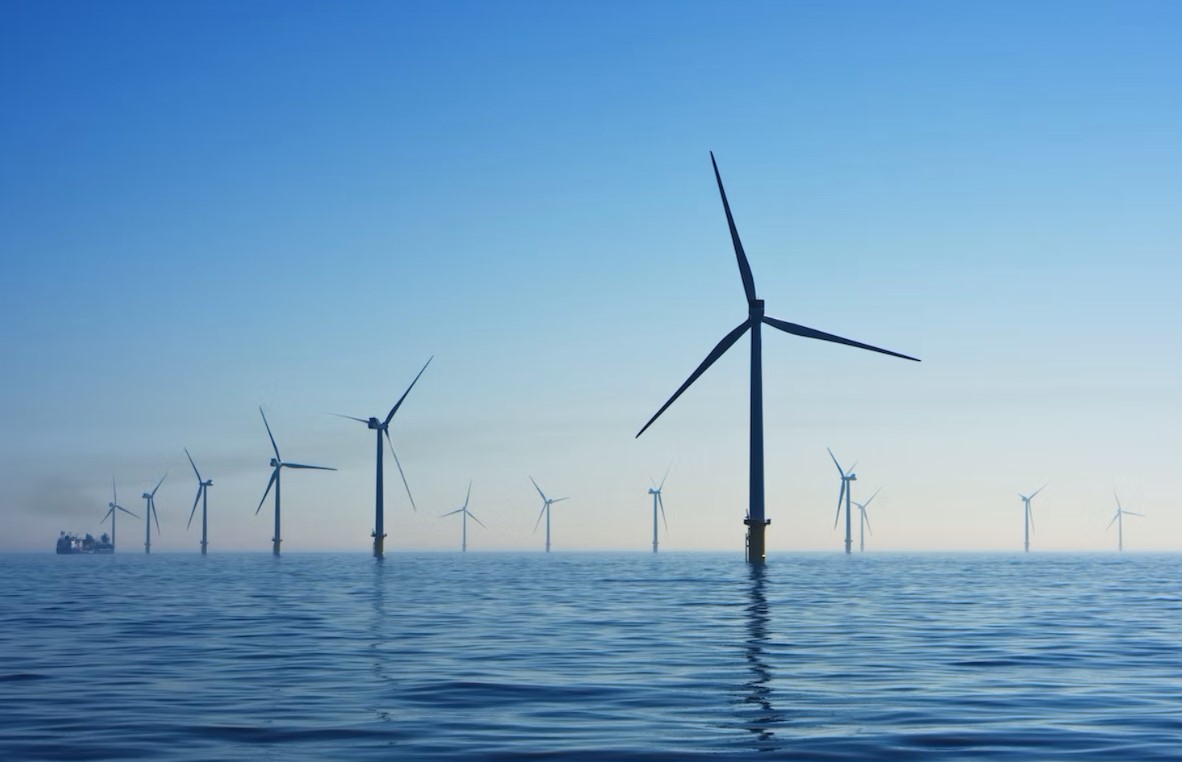
Correspondence between Ruby Vaishali Minz (Information Technology, Xavier Institute of Social Service, Ranshi) and Jose M (Sociology, Universidad Centroamericana – Managua)
Dear Jose,
How have you been? I am writing this letter to tell you about what my country is doing as an action against climate change.
India is the third largest emitter of carbon dioxide (CO2) after China and the US. With its rapidly growing population and an economy heavily dependent on coal and oil, its emissions are on a steep upward trajectory unless action is taken to curb them. Along with China, India forced a last-minute change to the agreement at the COP26 climate summit, softening a commitment to tackling emissions from the burning of coal.
Prime Minister Narendra Modi has set his country a target of net zero greenhouse gas emissions by 2070, a significantly later deadline than many other countries. India has resisted setting overall reduction targets, saying industrialized nations should bear a much greater share of the burden as they have contributed far more towards global warming over time.
It says an “emissions intensity” target, which measures emissions per unit of economic growth, is a fairer way to compare it with other countries. By 2030 Mr. Modi says India will reduce the emissions intensity of its economy by 45% (that’s of all greenhouse gases not just CO2) – a more ambitious target than the previous goal of a 33-35% cut in its emissions intensity from the 2005 level by 2030. But a fall in carbon emissions intensity does not necessarily mean a reduction in overall emissions.
Climate Action Tracker (CAT), which monitors government policies and actions, says the target is unlikely to have an impact on limiting overall projected emissions. The Intergovernmental Panel on Climate Change (IPCC) says a target of global net zero – where a country is not adding to the overall amount of greenhouse gases in the atmosphere – by 2050 is the minimum needed to keep the temperature rise to 1.5°C.
And more than 140 countries have publicly promised to meet this. India pledges net zero emissions by 2070. Coal supplies power to about 70% of India’s electric grid. India’s prime minister has pledged that it will increase its non-fossil fuel energy capacity to 500 gigawatts (GW) by 2030. It currently has a capacity of around 157GW. India had previously set itself a target of reaching 175GW. This goal excluded large hydroelectric and nuclear capacities, which it looks likely to miss as it currently stands at just over 100GW.
Although the new target for 2030 is more ambitious, it will only have a “small impact on real-world emissions,” says Climate Action Tracker.
Also in 2015, India promised to provide 40% of all electric power from non-fossil fuel sources by 2030. Mr. Modi has now increased this figure to 50%. Generation capacity from these sources stands at around 39% as of September 2021, according to India’s official statistics. But the actual amount generated in 2020 was lower at around 20%, according to the International Energy Agency (IEA).
Cindy Baxter, of CAT, says developing countries such as India, need international support to decarbonize their economies and limit the temperature increase to 1.5C in line with the Paris Agreement.
“India does not have a conditional target that identifies where…or indeed how much support it needs.”
India has also abstained from signing a global deal made at COP26 to reduce emissions of methane gas. It’s one of the most potent greenhouse gases, created by agriculture, fossil fuels and waste, and India is a major emitter.
India has highlighted many times that it wants to bring a third of its land area under forest cover, which can help absorb carbon. But it has not given a timescale for this – and progress has been patchy. Although there have been replanting initiatives in the southern parts of India, the north-eastern region has lost forest cover recently. And India plans to plant enough trees by 2030 to absorb an additional 2.5-3 billion tonnes of CO2 from the atmosphere.
Global Forest Watch – a collaboration between the University of Maryland, Google, the United States Geological Survey and National Aeronautics and Space Administration (Nasa) – estimates India lost 18% of its primary forests and 5% of its tree cover between 2001 and 2020. But the Indian government’s own survey data indicates a 5.2% increase in forest cover between 2001 and 2019. The GFW report includes only vegetation taller than 5m (16ft) whereas India’s official figures are based on tree density in a given area of land.
India has accepted a massive transformation of our energy systems, which will be designed for the future and compliant with the new climate change goals. What are your country’s commitments to fight climate change? What emission cuts has Nicaragua promised? How can growth be equitable and that the poor in the country are not denied their right to development in this new energy future?
Hoping to hear from you soon!
Thanks and regards
Ruby Vaishali Minz
Ranchi, 14 May 2022
Dear Ruby
I hope this letter finds you well. I really appreciate the communication with you . Thanks for asking about how I am doing .. I am doing well as I am finishing the first semester of 2022 in the university.
Nicaragua is a small country in the American continent and we are so behind in terms of development of big industries and measures to tackle carbon emission and contamination in general , our government is managed by a corrupt wicked man who does not care about the environment nor the well being of its own people . I would like to talk of one of our major loses in terms of our natural resources Lake Xolotlan in the capital in which for decades , household sewage and industrial effluents generated by residents and farmers in northern Nicaragua ended up unfiltered in this beautiful lake , one of Central America’s largest freshwater reservoirs. The result was an epidemic of water-transmitted infections and toxins in the lake’s fish. The contaminated lake posed a health hazard to people living along its shores, who depend on its water to cook, drink and wash. Now, a water treatment plant installed on the shores of the lake has begun cleaning up the waste water and supplying fresh, drinking water. Experts are also working on using the abundant dried sewage sludge as an alternative to synthetic fertilizers. The aim is to save money, slash carbon emissions and help restore the lake’s strained ecosystem.
My country is one of the few countries that did not sign the COP22 treaty , later the regime decided to sign it for the latter treaty. I would just also like to talk about the richness of my country in terms of natural resources. We have two big forest natural parks. Bosawas and Indio Maiz , the latter was in major problems during 2018 because our government allowed groups of people to come and burn big extensions of the forest to plant oil palms to sell in the international market , this is an ongoing problem everywhere in the world I am not so sure if this also happens in India and I would like to know more about the problems India’s forest face.
I would also like to mention that our forests are sacred lands for our native people as is the case in the rest of America and our government is savagely expropriating them of their land to plant these palms and expand our agricultural frontier. In the long run this will only bring more famine and our temperatures and natural disasters will increase due to this.
For years our nation has opened doors to international companies that manufacture clothes and they create job opportunities with very low salaries for people. During the pandemic many of these companies closed and left the country , as you can see these places have created more problems than solutions for our people.
Recently I have noticed that people are starting to buy big batches of used clothes that come from USA and the stores that sell this kind of clothes are booming all along the country , this is generating a lot of unnecessary contamination in every single town , since the clothes that are not sold are thrown in natural creeks or left in the streets where people burn them .
We are slowly becoming other countries’ dumpsters for their items that they don’t use anymore and there is not a single initiative or regulation to prevent this from happening.
Although I have mentioned the biggest environmental problems we face, I also would like to mention one of the advances we have in 2013, Nicaragua ranked third in Latin America for investments in renewable energy. This was because Nicaragua’s energy composition had a high level of renewable sources and investments in renewable energy were high relative to the size of its economy. In 2008, electricity generated in Nicaragua from fuel oil was 68 percent while renewable energy was responsible for only 32 percent. By 2014, however, the electricity generated using renewable resources increased to 52 percent.Multiple institutions share responsibility for governing Nicaragua’s electricity sector. The main institution is the Ministry of Energy and Mines (MEM), which is in charge of producing policies and strategies to develop the national electricity sector and granting the authorizations to generate, transmit and distribute electricity. This Ministry plays an important role in developing renewable energy in Nicaragua and its main goal is to maintain an energy policy that allows continued electricity generation from renewable resources.
Nicaragua is determined to transform its energy composition from one heavily reliant on fuel oil to one based principally on renewable energy. For that reason, the Nicaraguan government has approved specific laws that provide incentives to boost electricity generation through the development of renewable energy projects.
The electrification rate has increased steadily in Nicaragua, from 47 percent in 2002 to 80 percent in 2014. Part of this increase is due to small hydroelectric power plants in rural areas.
I hope to hear back from you soon so we can continue this conversation!
Regards
Jose M
Managua, 14 May 2022


